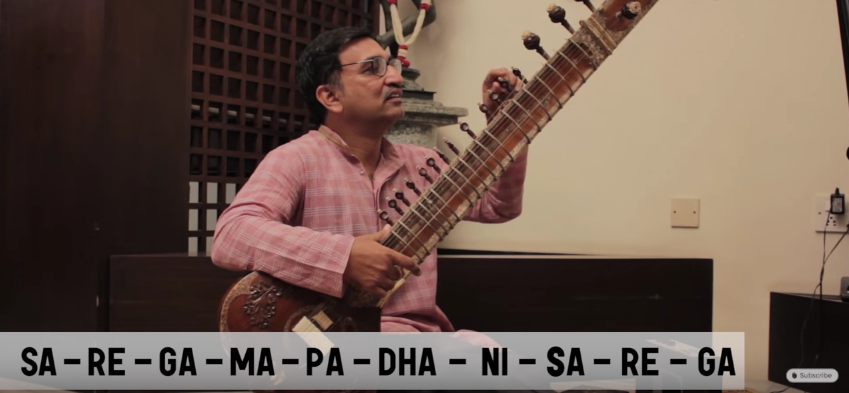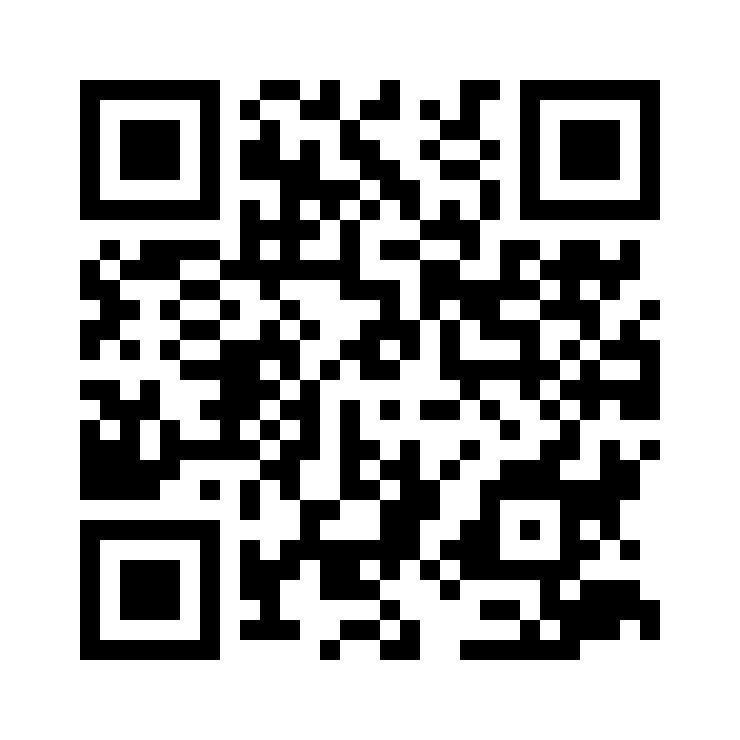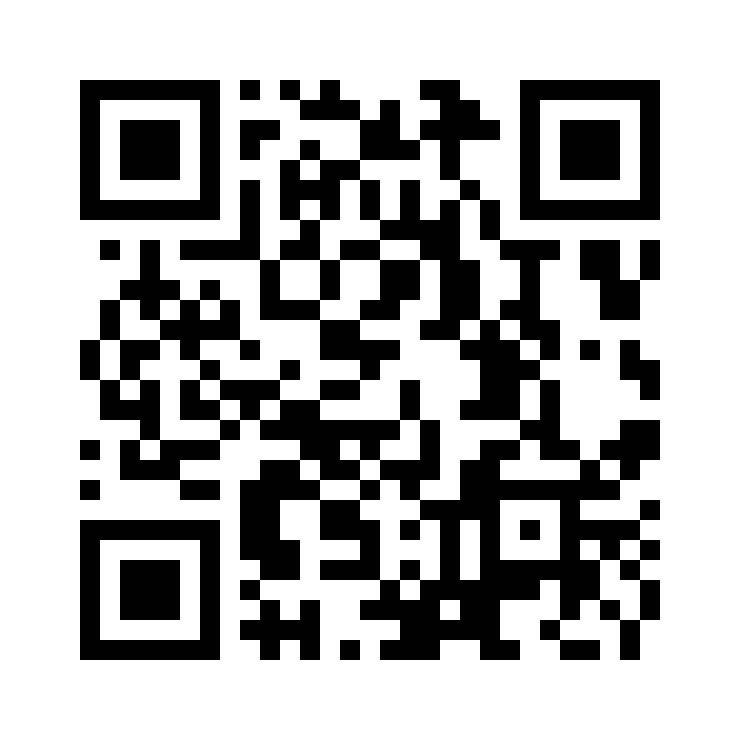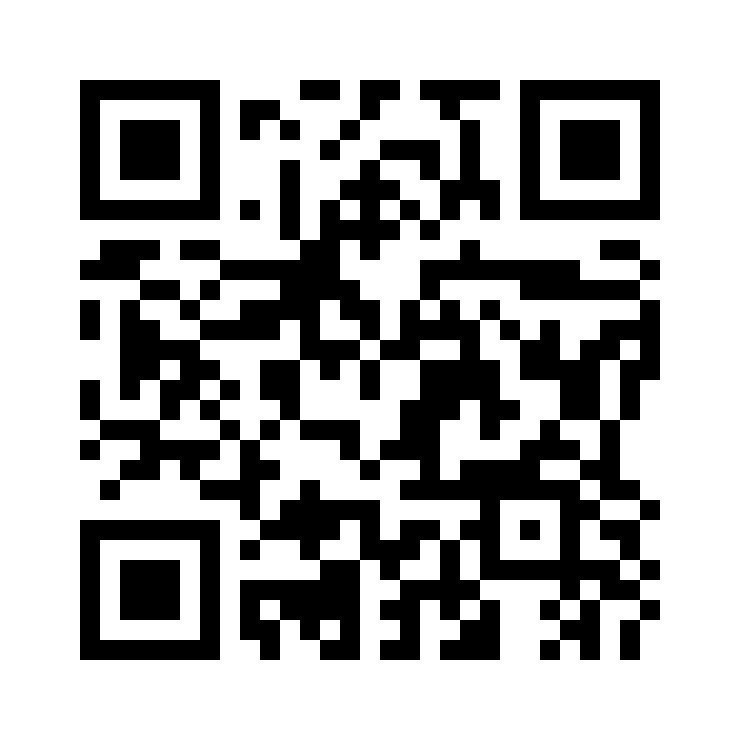Technically, you can tune the sitar to be in any key, but mostly it's in the Key of D.
The key of D has one sharp, F#, and this article will show you how to tune the strings accordingly.
Note: Like guitar tablature notation, my article assumes that the top string represents the bottom string closest to the floor.
Standard Tuning
In Western music, it's common to tune in C, but the standard Indian tuning is in D. Here's what the tones look like:
Solfege: Sa Re Ga Ma Pa Dha Ni Sa
Note: D E F# G A B C D
If you're curious to learn more about Indian Solfege, read this article.
Primary Strings
If you watch online videos, you will notice that people prefer to talk about tuning the sitar using the Indian equivalent of Solfege called sargam.
This system is excellent, but when I first started learning, I found it too confusing, so the diagram below shows you both the note and the Sargam notes side-by-side.
My sitar has six strings, but if you were to have 7, you could have two strings that resonate A Pa.
1st |-- G --- Ma -- 0.014 gauge
2nd |-- D --- Sa -- 0.014
3rd |-- F# -- Ga -- 0.022
4th |-- A --- Pa -- 0.028
|~ Chikari Strings ~
5th |-- D --- Sa -- 0.009 (Medium octave)
6th |-- D --- Sa -- 0.009 (High octave)
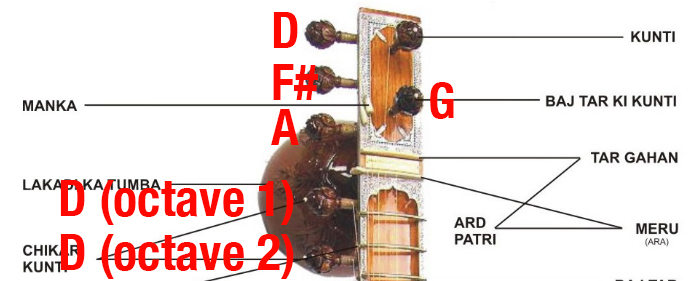
Chikari Strings
In the diagram above, I wrote a note that says "Chikara Strings." These strings are accented strings tuned to a medium octave D and a high octave D. They are strings you primarily strum, which is why their string gauge is thinner than the primary strings.
Sympathetic Strings
Sympathetic strings are used to enhance the sound of an instrument. They function as resonators. Within the sitar, there are either 11 or 13 strings. Below is the tuning for 13 strings.
If you only have 11 strings, ignore 12 and 13.
1st |-- D -- Sa -- 0.008 gauge
2nd |-- C# -- Ni -- 0.008
3rd |-- D -- Sa -- 0.008
4th |-- E -- Re -- 0.008
5th |-- F -- Ga -- 0.008
6th |-- F# -- Ga -- 0.008
7th |-- G -- Ma -- 0.008
8th |-- A -- Pa -- 0.008
9th |-- B -- Dha -- 0.008
10th |-- C -- Ni -- 0.008
11th |-- D -- Sa -- 0.008
12th |-- E -- E -- 0.008
13th |-- F -- Ga -- 0.008
Sitar is not an exact science
Sitar tuning is not an exact science, so if you're unsure what notes to tune your sympathetic string, it's totally fine to adjust them to your liking. As long as the notes are tuned in the right key, you'll sound fine.
Ravi Shankar Tuning
Ravi Shankar preferred to tune his instrument to the key of C#. Therefore, it's going to look something like this:
Primary Strings
1st |-- C# -----
2nd |-- C# -----
3rd |-- G# -----
4th |-- C# -----
5th |-- G# -----
6th |-- C# -----
7th |-- F# -----
Sympathetic Strings
Ravi Shankar performed a sitar with 11 sympathetic strings.
1st |-- C# -----
2nd |-- C -----
3rd |-- A# -----
4th |-- G# -----
5th |-- F# -----
6th |-- F -----
7th |-- F -----
8th |-- D# -----
9th |-- C# -----
10th |-- C -----
11th |-- C# -----
Tuning Apps
As a guitar player now switching over to sitar, I still have the habit of wanting to tune my strings using a tuner. Here are the three apps I recommend to help you tune your sitar.
iOS
iTablePro
Currently the best Sitar app for iOS. It's great because it also doubles up like a metronome (aka Tabla). Yes, it's $24, but it's seriously awesome.
Silvertune
Good app for anyone coming from a guitar background. It's a guitar app that uses the microphone to help you tune your instrument. What I specifically love about this app is that the design is beautiful, and it provides cents.
Android
Tanpura Droid
Android is pretty good, and it's free!
Resources
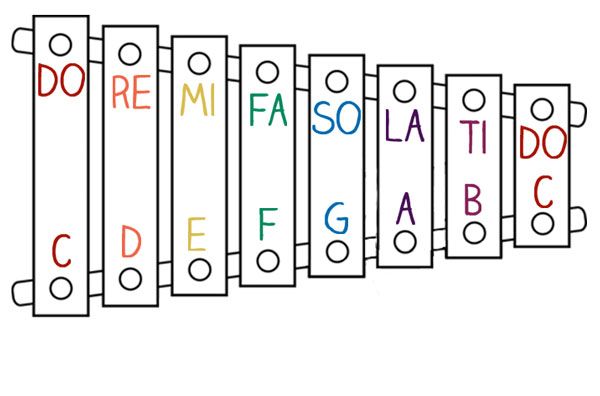

Anatomy of a Sitar for Guitarists
This diagram shows you the anatomy of the sitar. The diagram is really for reference but there are a few things worth mentioning. -------------------------------------------------------------------------------- The Base The entire...


